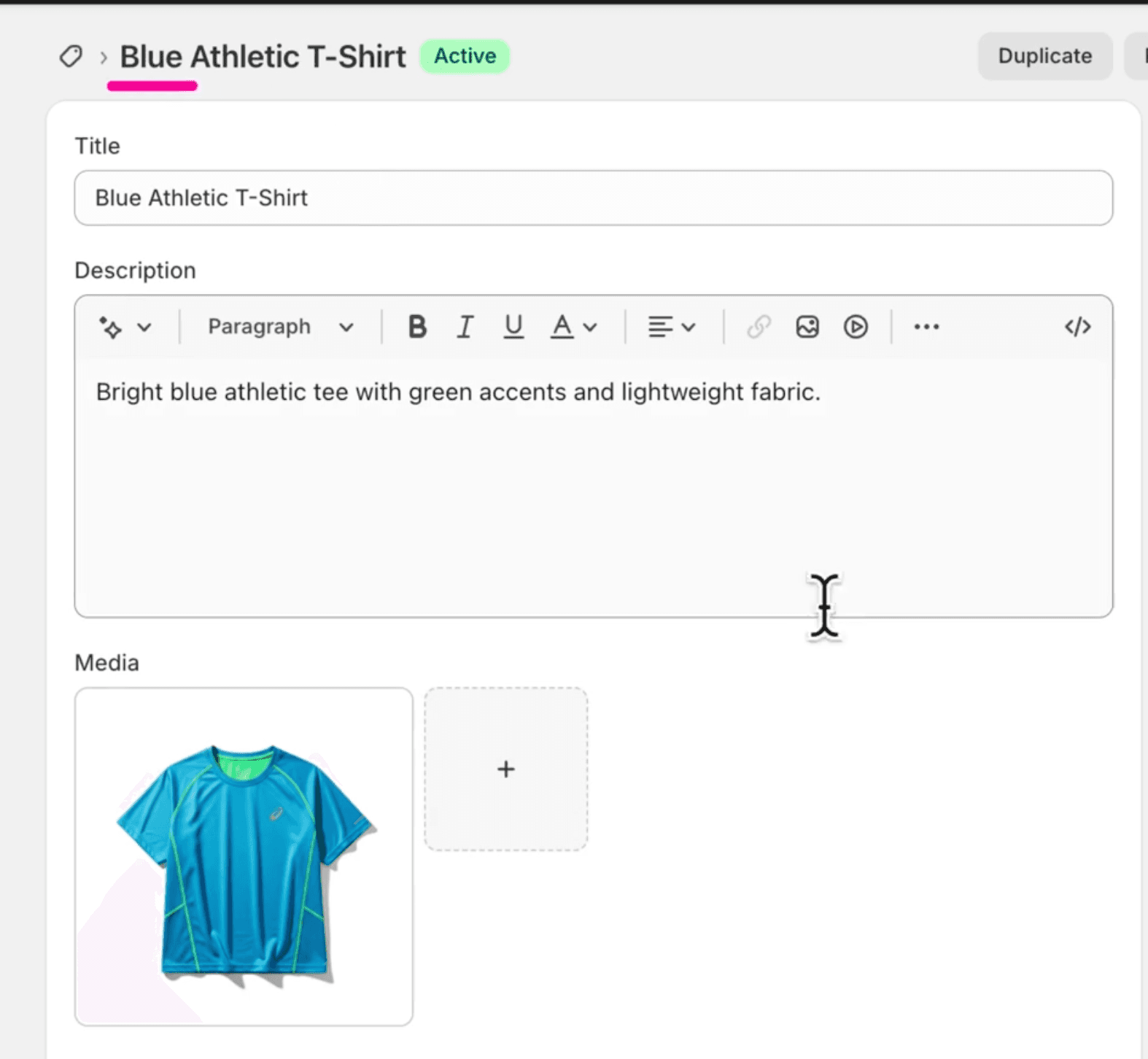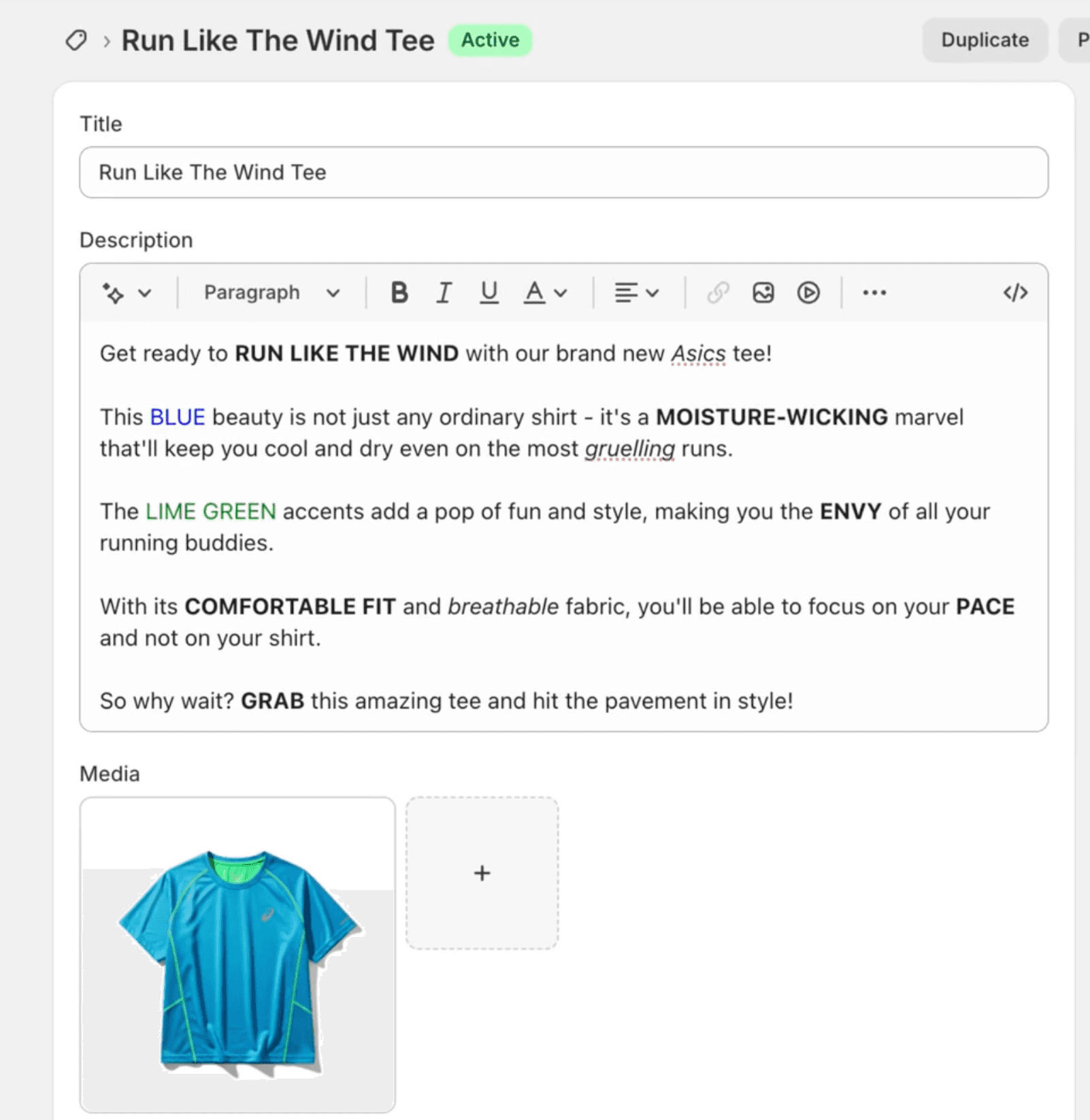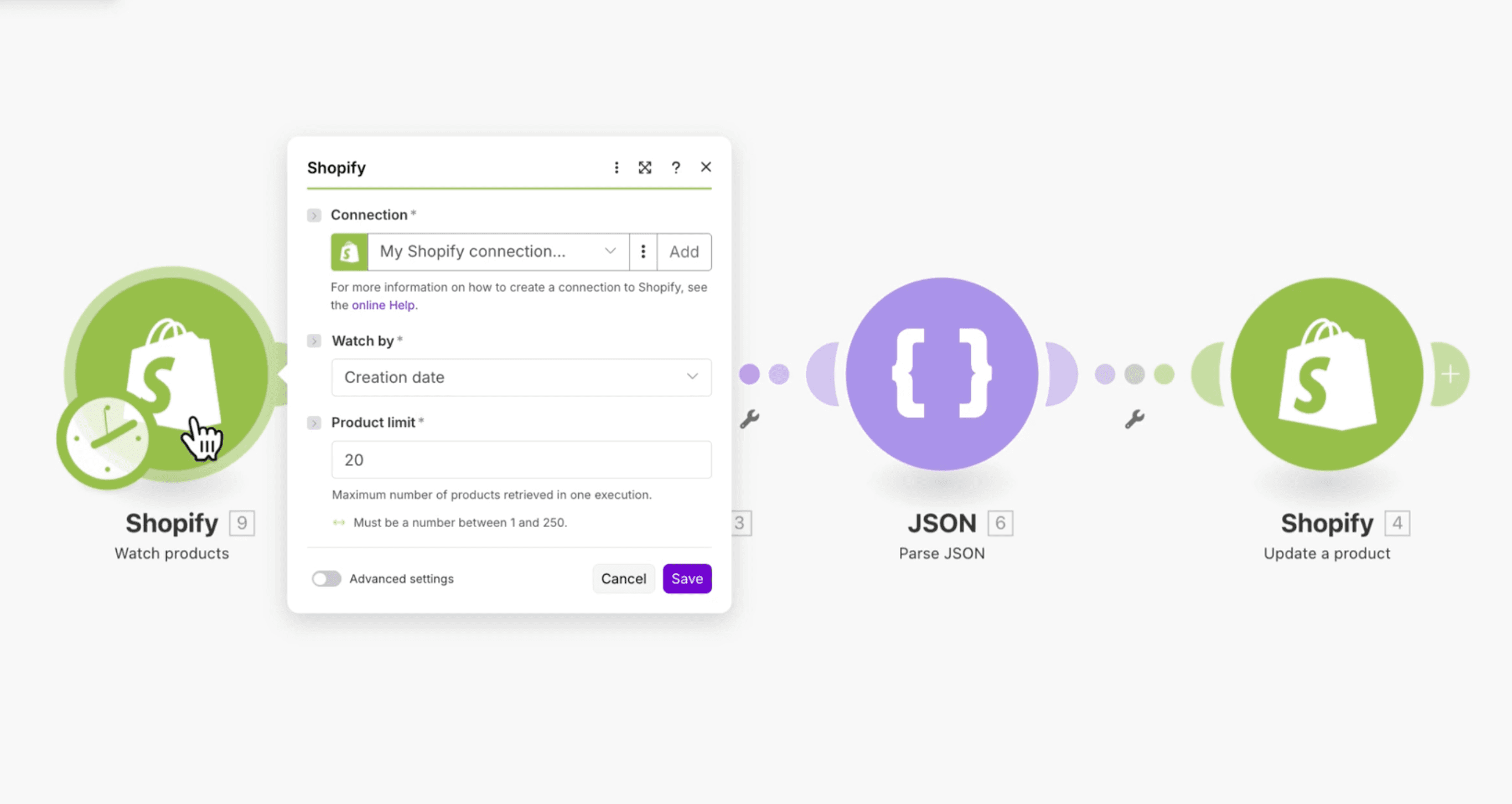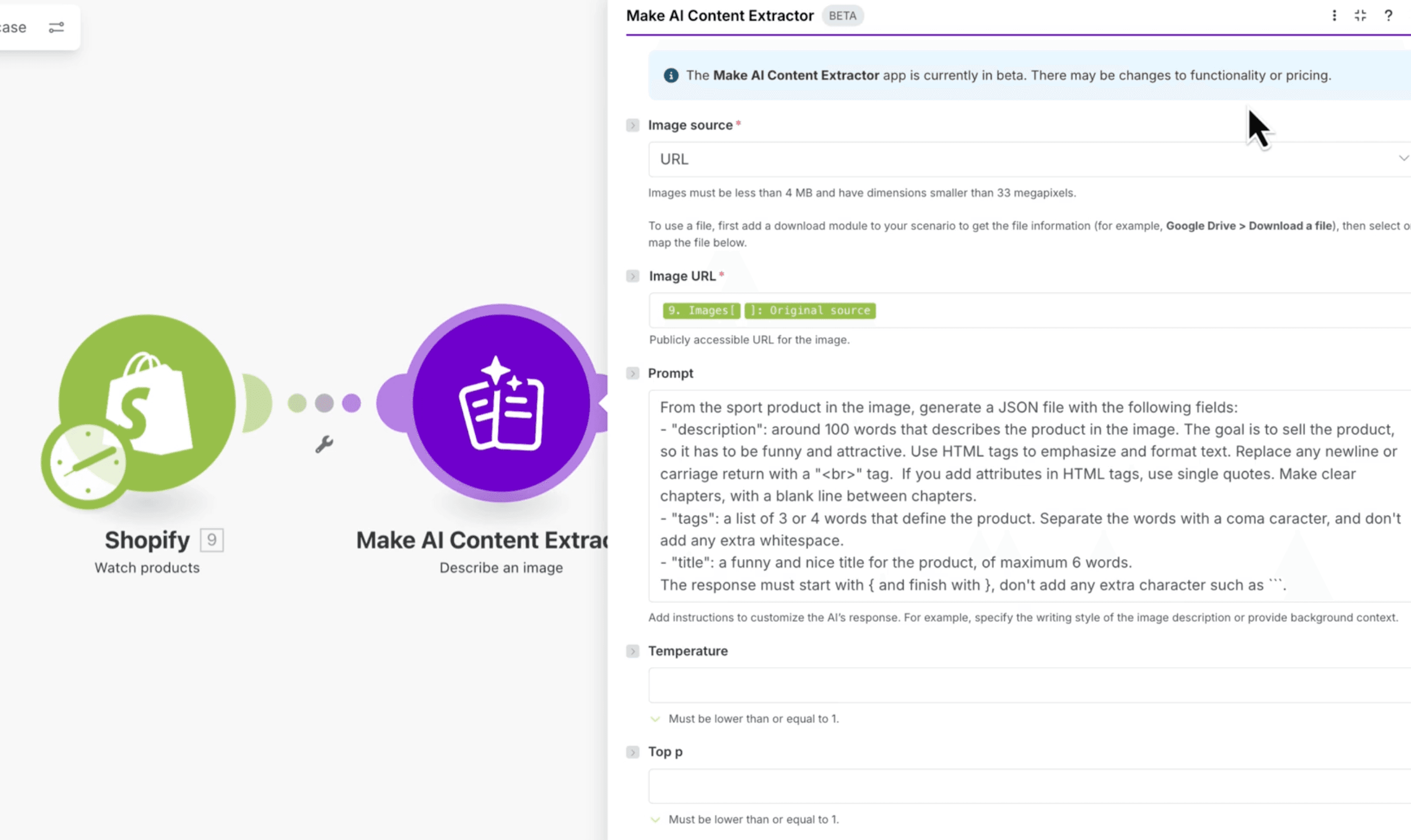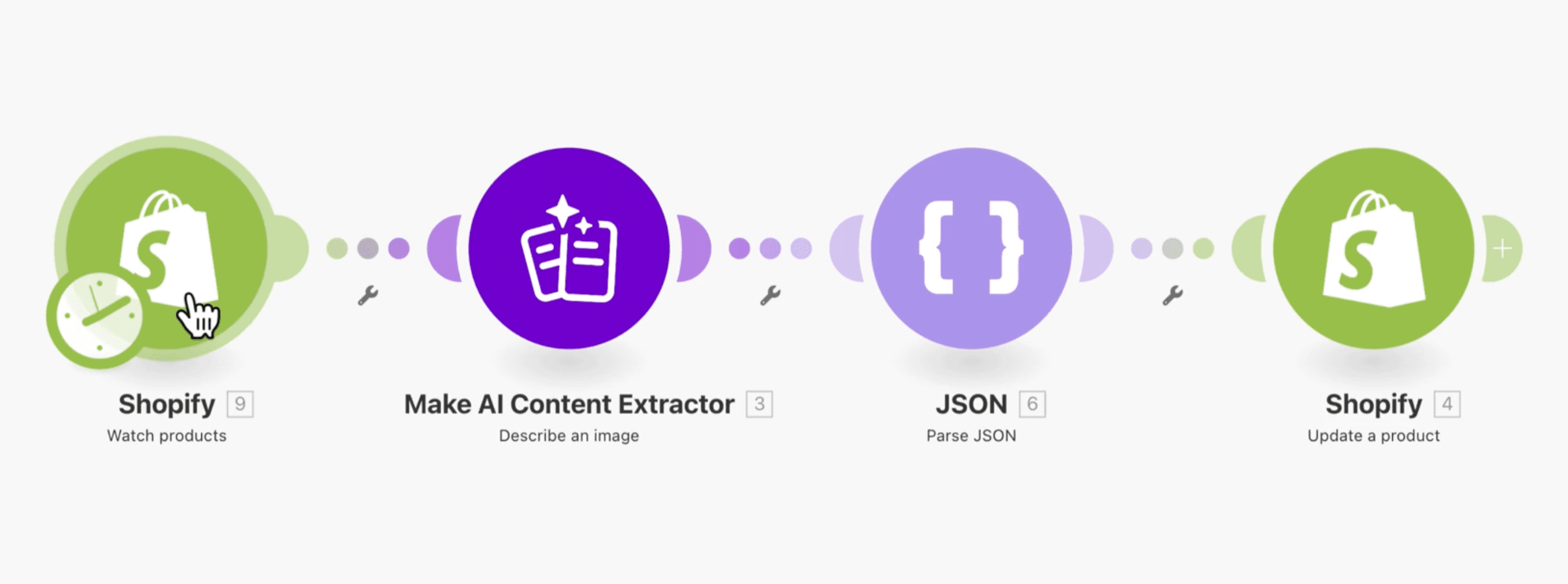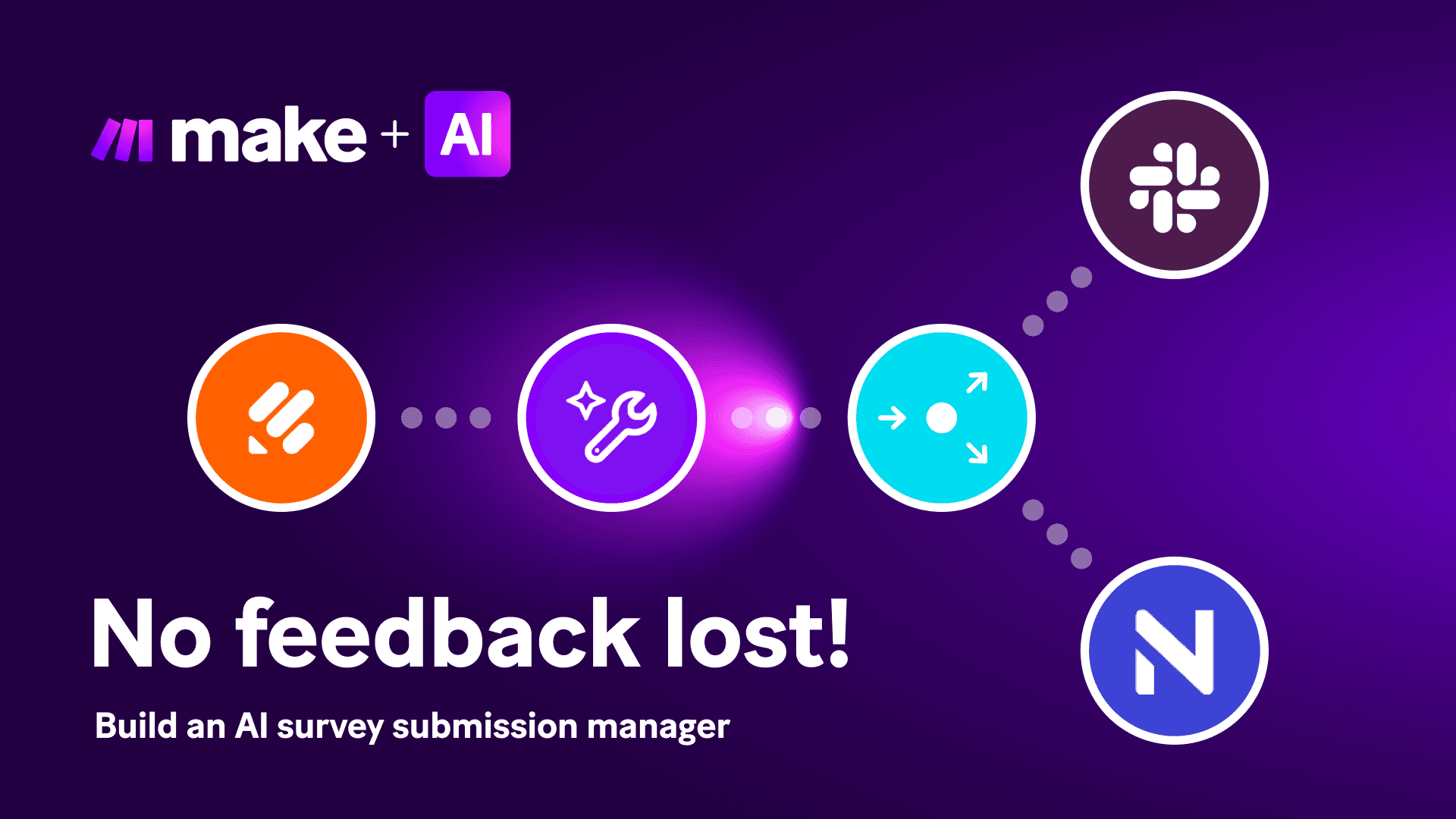Oct 23, 2025 | 5 minutes
How to create SEO-ready product copy with Make & AI e-commerce automation
Ready to streamline your product listings? Learn how to automatically generate SEO-optimized titles, descriptions, and tags for your Shopify store using Make and AI, saving hours of copywriting work.

Tired of spending ages trying to come up with a snappy title and a clever description for every product?
Unless you’re an experienced e-commerce copywriter, it can take hours, and you often still miss the details that actually make people hit ‘buy’.
But the importance of product copy can’t be understated – it’s one of the biggest drivers of conversion.
Studies show 88% of shoppers say product content plays an extremely or very important role in their purchase decisions, while up to 30% of cart abandonment happens because of poor product descriptions.
Thankfully, by combining the powers of automation and AI with Make it’s now fast and easy to create SEO-optimized, engaging product titles, descriptions, and tags for your listings.
This guide will show you how.
Why does product copy matter
Good product copy does more than fill space. It informs, persuades, and improves SEO.
Help people find you: Search engines look for relevant keywords. Well-written product copy helps your products appear higher in search results and on marketplaces like Google Shopping.
Build trust: Clear, detailed descriptions answer questions before shoppers ask them. That creates confidence and reduces hesitation.
Drive more sales: Titles and descriptions that highlight benefits and use natural language help customers imagine owning the product and move them closer to buying.
Reduce cart abandonment: If shoppers can’t immediately find the info they need in a product description, they are likely to leave (and not come back). Good copy keeps them committed all the way to checkout.
Benefits of improving your product copy with e-commerce automation
Writing high-quality SEO titles, descriptions, and tags for every product takes time and effort. Automating with Make gives you the same results, without the manual effort.
Your catalog stays fully optimized and consistent
Titles and descriptions consistently reflect your brand voice
Search visibility improves with SEO-friendly tags
Better copy drives more clicks and conversions
Before product descriptions were automatically optimized, we could see the listing looking like this:
After the Make scenario is built, the listing is automatically transformed into this:
How to automatically create titles, descriptions, and tags for your Shopify products
To help you automatically create product copy in Shopify, we built a Make scenario that does the legwork for you. And the best part – you can replicate it in no time!
It detects new products, sends each product image to the Make AI Content Extractor, parses the AI response, and updates your Shopify listings with engaging, SEO-friendly copy.
You’ll need:
A Make account
A Shopify store
Product images uploaded to Shopify with public URLs
Step 1: Watch for new products
Add the Shopify → Watch products module.
This module triggers whenever a new item is added to your store.
Every time a product appears, Make will capture its details and image for processing.
Step 2: Describe the image with AI
Next, add the Make AI Content Extractor → Describe an image module.
In the Image URL field, add the product image from the Shopify module, along with any key product data you want the AI to use when creating the text.
Then, you can enter a custom instruction in the prompt field. Here’s an example:
From the product in the image, generate a JSON file with the following fields:
- "description": around 100 words that describe the product in the image. The goal is to sell the product, so it has to be engaging, accurate and creative. Use HTML tags to emphasize and format text. Replace any newline or carriage return with a "<br>" tag. If you add attributes in HTML tags, use single quotes. Make clear chapters, with a blank line between chapters.
- "tags": a list of 3 or 4 words that define the product. Separate the words with a comma, and don't add any extra whitespace.
- "title": an attention-grabbing title for the product, maximum 6 words.
The response must start with { and finish with }, don't add any extra character such as ```
This prompt tells the AI to analyze both image and data, then return structured content you can reuse.
Step 3: Parse the response
The scenario won’t automatically unpack JSON text. You’ll need to use the JSON → Parse JSON module to convert the structured text generated in step 2 into usable fields.
You’ll now have clear values for your title, description, and tags.
Step 4: Update the product in Shopify
Add the Shopify → Update a product module.
Map the new title, description, and tags from the parsed data.
Once complete, every new product you add will instantly receive:
A creative, SEO-ready title
A 100-word HTML-formatted description
A clean list of tags for search visibility
Next steps
Try running this scenario on a few existing products to see the difference for yourself. Then connect it to your live Shopify store so every new item is optimized automatically.
Build your own AI product copy generator
From titles and descriptions to SEO tags, you can automatically create consistent, engaging copy for every product in your store.

